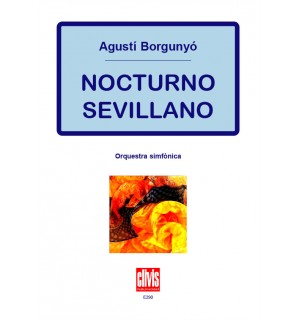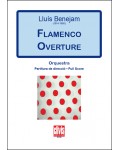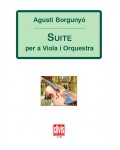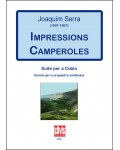
No products
Prices are tax included
Product successfully added to your shopping cart
There are 0 items in your cart. There is 1 item in your cart.
- English
- Castellano
- Català
Nocturno sevillano
E290
New product
Sevillian Nocturne is a symphonic piece with music that has clear roots in Seville. The melisma typical of Arabic-inspired music is ever-present, and the sound of the guitar is anticipated in the arpeggios of the harp and piano, which take on soloist parts at certain points of the work.
| Period | 20th c. |
| Instruments | 3[1.2.3/pic] 2[1.2/pic] 22 - 4330 - timp - arp - pf - archi |
| Pages | 52 |
| Time | 10 min |
| Contents | score |
| ISMN | 979-0-3502-0473-9 |
| Remarks | The parts are available in rent regime. Contact with the publisher (info@clivis.cat). |
| Orchestras | si |
| Edition | Printed |
The way in which Agustí Borgunyó is easily able to handle symphony orchestras is the result of the hundreds of scores he composed and arranged for large orchestras during his professional career in the United States. Before the 1930s, he had already been the artistic director of the different orchestras which he composed all manner of works for. From 1934 onwards however, he worked for Alfred Wallenstein (who would later be the director of the Los Angeles Philharmonic Orchestra) who asked him to compose pieces with the Hispanic flavour that had become so popular following the international success of Manuel de Falla. During that period and with this objective, Borgunyó composed the Suite per a viola, which included a movement entitled Gitanerías, and other works with a clearly Hispanic air, such as Danza ibérica, Nocturno sevillano or the Suite ibérica. Years later, Borgunyó himself composed a suite with a Catalan flavour entitled L’aplec, which are included in the Clivis Publicacions catalogue.
Nocturno sevillano (Sevillian nocturne) is a symphonic piece with music that has clear roots in Seville. The piece starts with a lament by the bassoon and a pianissimo rolling of the kettledrum to create the twilight atmosphere suggested in the title. The melisma typical of Arabic-inspired music is ever-present, and the sound of the guitar is anticipated in the arpeggios of the harp and piano, which take on soloist parts at certain points of the work. Within the different parts of the work, some calm and others more rhythmical, a fragment can be heard in the style of the fandanguillo and the cadence of a flute can be heard above the arpeggios of the harp. The work concludes with a saeta that is repeated throughout the piece, but this time played by a cello that fades away into the Andalusian night.


































![La rosa dels vents [parts]](https://www.clivis.cat/1588-home_default/la-rosa-dels-vents.jpg)

